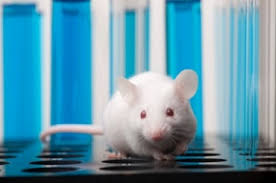
Experimental Animal Facility has received accreditation and is ready to serve scientists
Experimental Animal Facility began operating at the University of Veterinary Medicine and Pharmacy in Košice. This device is intended for keeping laboratory animals. University workplaces will use it for scientific or educational purposes in accordance with approved projects. Experimental Animal Facility is set up to house laboratory mice, rats and domestic rabbits. It has been accredited and meets all the strict legislative conditions and ethical principles necessary for the handling of animals. Organizationally, it belongs to the Research Centres and Laboratories. The management is entrusted to DVM. Zuzana Hurníková, Ph.D.
The device is used exclusively for keeping experimental animals, which are used for biomedical research for the needs of the workplaces of the University of Veterinary Medicine and Pharmacy in Košice. Experimental Animal Facility is functionally divided into a rabbit compartment, a mouse or rat compartment, a quarantine/isolation room, an animal handling room and a technical section with a washroom, material storage, hygiene loop and staff rooms. The maximum single animal status is 384 laboratory mice, 96 rats and 24 domestic rabbits weighing up to 5 kg.
"At present, biomedical research cannot do without animals. We accredited Experimental Animal Facility as partners within the project of the Medical University Science Park in Košice (Medipark). It will be available to all employees of the university, who will need to verify the results of their research,"explains Zuzana Hurníková, in charge of the EAF management.
Every branch of medicine has areas of research that cannot be assessed other than on animals. The processes taking place in a living organism are complex and influence each other. Despite the fact that we have a wide range of alternative methods and models, the whole complex cannot be verified other than on a live animal. "The process of preparing and approving projects is challenging. European and Slovak legislation for the protection of animals intended for scientific or educational purposes is very strict. It takes care to minimize the suffering and discomfort of animals in research. The number of projects for which experimental verification on live animals is envisaged is therefore declining. However, in the current state of knowledge, it is not yet possible to completely replace an animal in research," says Zuzana Hurníková.
The principles of operation Experimental Animal Facility are available at
http://www.uvlf.sk/organizacna-struktura/univerzitna-veterinarna-nemocnica/centrum-aplikovaneho-vyskumu